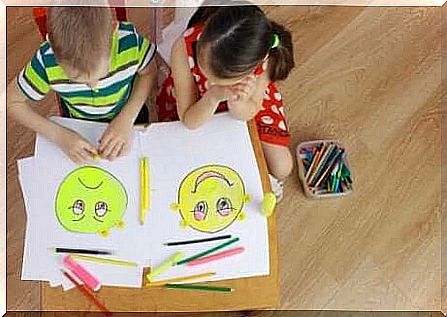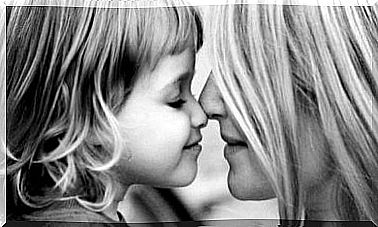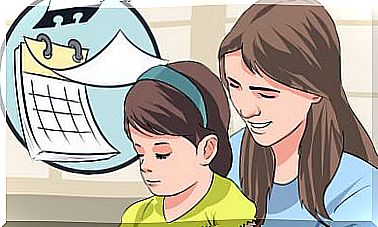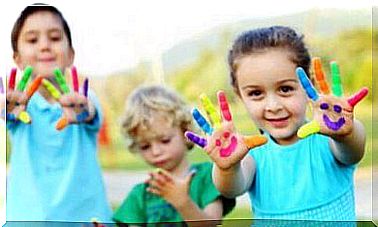Secondary Emotions In Children

Emotions can be divided into primary, secondary and instrumental emotions. Primary emotions are fundamental emotional responses to external stimuli and support human survival. The primary emotion may be, for example, anger in an unjust situation, grief at the time of loss, or fear in a threatening situation. Secondary emotions, on the other hand, are the result of learning and are acquired through the control of primary emotions. They are reactions to primary emotional or cognitive processes.
According to a classification created by psychologist Paul Ekman, primary emotions include feelings caused by joy, sadness, anger, fear, nausea, loneliness, and shock. A characteristic feature of all of these is that they are universal and genetically predetermined. So they already exist at birth. Danish physician Carl Lange and American psychologist William James also once became acquainted with the same field of research. According to them, emotions depend on two factors, which are the physical changes in the body due to the stimulus and the way the emotions are interpreted.
The theory of social psychologist Stanley Schachter and psychologist Jerome Singer is based on this idea. According to them, our thoughts can release an organic response and a series of brain neurotransmitters. Just as the environment and the people around us can evoke primary emotions, so can our own thoughts.
What are secondary emotions?

Unlike the primary emotions mentioned above, the secondary emotions are more complex. According to Ekman, these emotions arise as a result of a combination of human growth, interaction with other people, and primary emotions. Identifying secondary emotions is also more difficult than identifying primary emotions. Secondary emotions are not always manifested through gestures – for example, a smile or a raised eyebrow – unlike primary emotions.
In the 1990s, Ekman has identified the following emotions as secondary emotions:
- Amusement
- Guilt
- Embarrassment
- Scorn
- Satisfaction
- Enthusiasm
- Pride in achievements
- Pleasure
- Shame
- Feeling of relief
- Sensory pleasure
All of the above emotions are united by the fact that they are learned, spiritual, and not related to biocompatibility.
The connection between primary and secondary emotions
Venezuelan psychologist Graciela Baugher has done an interesting analysis on the subject. According to him, secondary emotions express a rotating problem in the mind that must be eliminated in order to avoid its consequences. Secondary emotions are extensions of primary emotions that can be detrimental to human health over time. Baugher notes, for example, that fear protects against certain situations, but over time, pent-up fear can cause anxiety, panic states, and phobias.
The same goes for sadness. Grief helps in recovering from a traumatic experience, but when prolonged, it can lead to depression and suicidal thoughts. According to Baugher, the same goes for feelings of happiness and anger. Happiness can lead to affection and pleasure, while anger can lead to anger or resentment over time.
Secondary emotions in children

Demonstrating emotions is an important part of a child’s emotional development. The first stage of development involves learning to recognize emotions. In this context, parents have an important role to play in supporting a child’s development of emotional intelligence. They can help the child understand different emotions through exercises and tasks, for example, and by using games, drawing, and smartphone applications.
The work of the aforementioned Paul Ekman is based on the study of expressions. Indeed, this is the first means by which a child’s secondary emotions can be detected. If a child is observed or suspected of experiencing strong emotions, it is a good idea to discuss the matter with him or her. Lyricizing emotions is one of the best ways to express emotions in both children and adults. The fact that a child does not express his or her feelings is more harmful than one can imagine. Suppression of emotions can lead to emotional and mental weakness, low self-esteem, lack of empathy and authenticity, and behavioral problems.
Behavior problems are one way a child expresses their secondary feelings. While such problems may be related to the child’s inheritance or personality, they may also be due to upbringing. Bad behavior can be a direct consequence of the upbringing a child receives, which is also associated with an emotional level.
Keeping negative emotions inside can create more negative emotions and resentment. If, on the other hand, the child expresses his or her feelings but does not receive the necessary support and attention, the situation is even worse. It is clear that parents are particularly important in taking into account a child’s emotions. It is their responsibility to teach the child to express and deal with their feelings in a healthy way.









